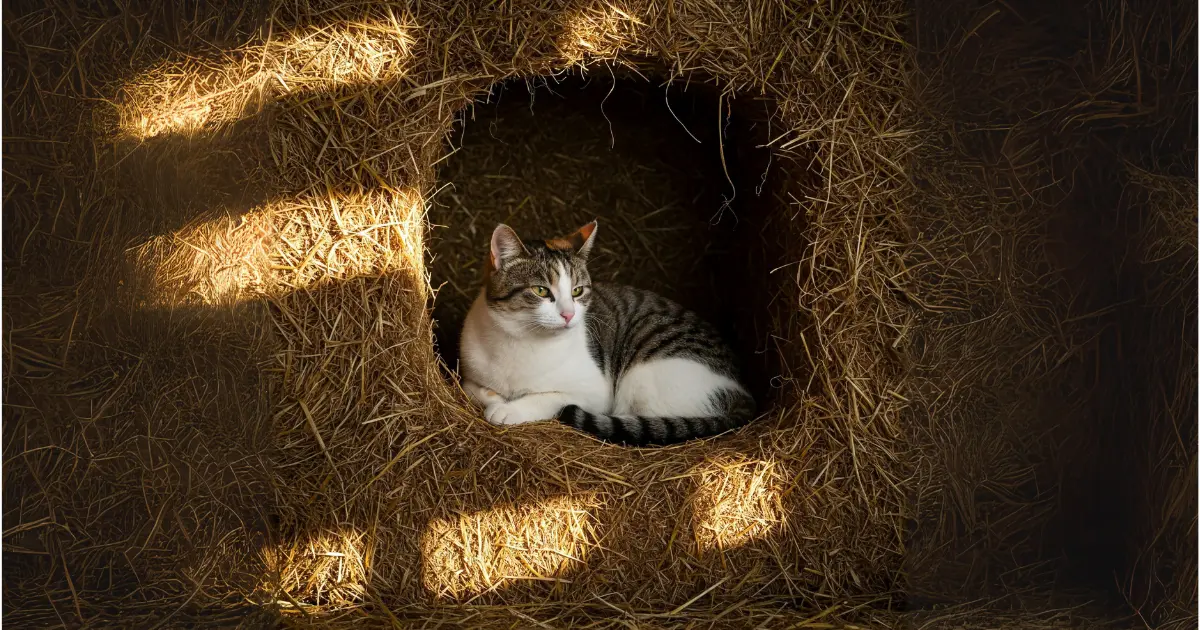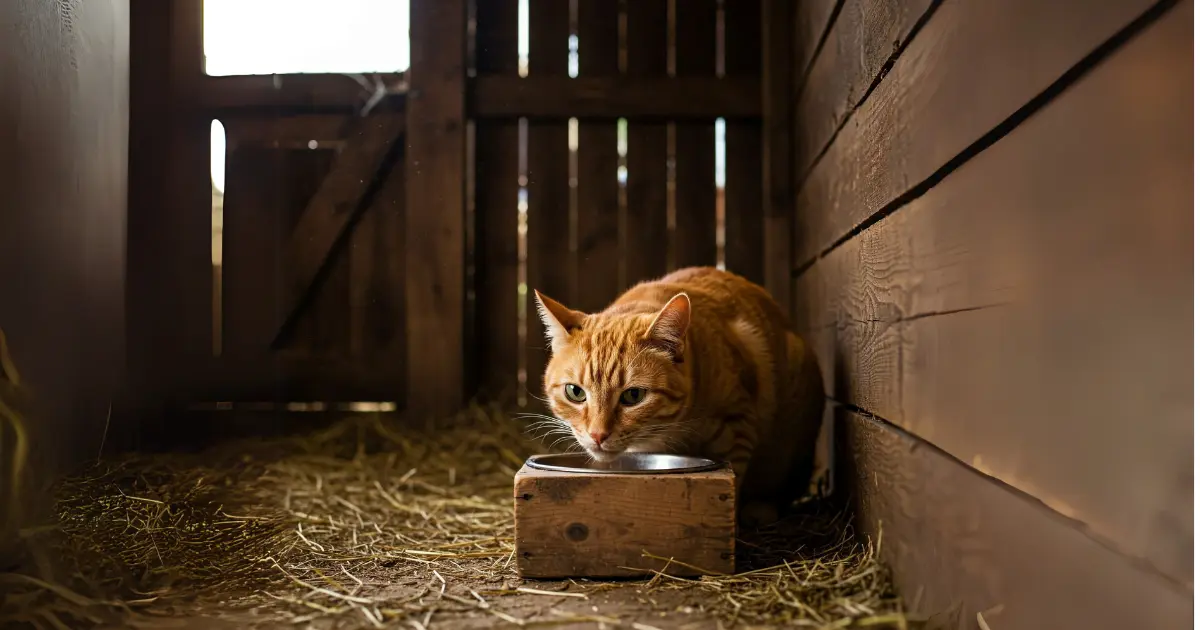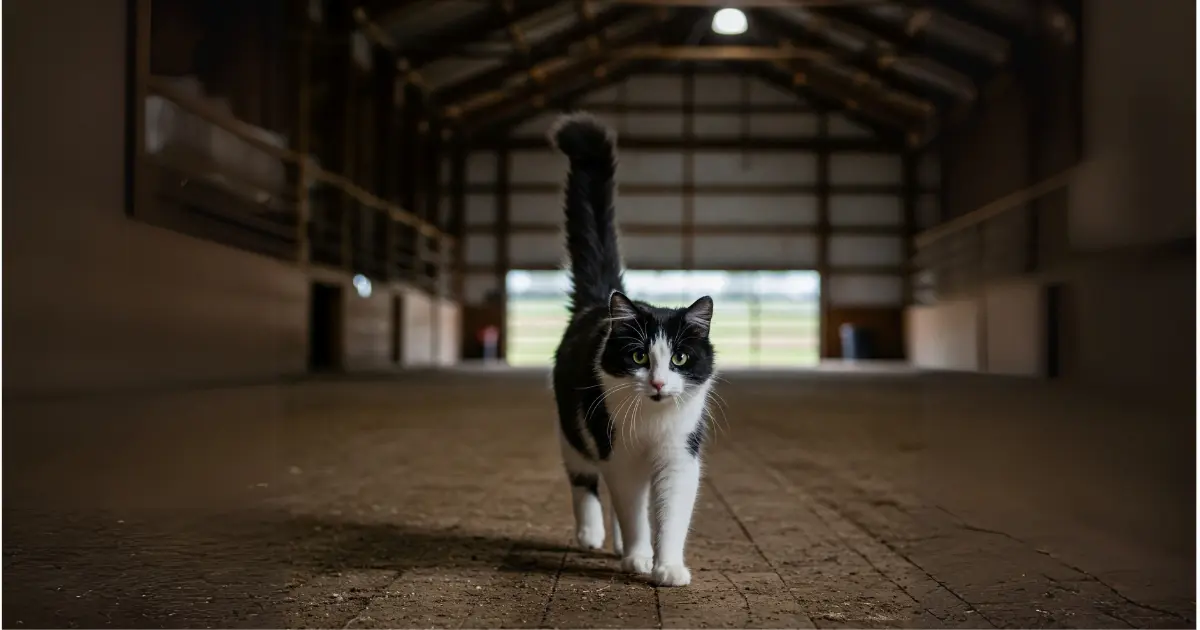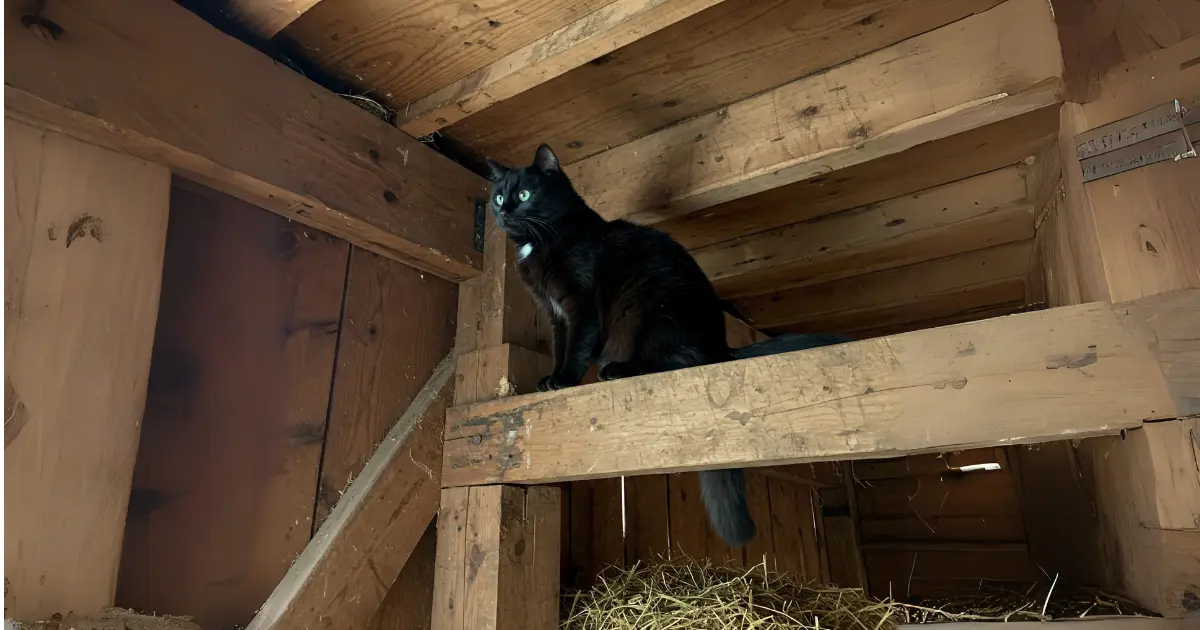How to Keep a Barn Cat from Running Away: A Practical and Heartfelt Guide
Published: 22 Feb 2025
You set up the perfect barn space, thinking your new cat will settle in—only to wake up and find them gone. It stings. Keeping a barn cat from running away can feel challenging, especially since they are naturally independent. However, they still need a place to feel safe and secure. The trick isn’t just keeping them there—it’s making them want to stay. With patience, trust, and the right approach, you can give your barn cat a home they’ll never want to leave.

Table of Contents
1. Not Every Cat is Meant for Barn Life
Before bringing a cat into a barn setting, ask yourself: Is this the right cat for the job?
Some felines embrace outdoor life, while others panic at the first gust of wind. I once tried introducing a former house cat to my barn, thinking she’d love the open space. Within an hour, she had bolted for the woods. Lesson learned: Not every cat is built for this lifestyle.
The Best Types of Barn Cats:
✔ Semi-feral or feral cats – They’ve already adapted to outdoor conditions.
✔ Rescue barn cats – Many shelters have special “working cat” programs.
✔ Adult cats – grown cats are better equipped to withstand outdoor conditions than vulnerable kittens.
Cats That May Not Thrive in a Barn Environment:
House-raised cats – They’re used to warmth and human companionship.
Super affectionate cats – Some prefer a couch over a hay bale.
Declawed cats – They cannot defend themselves.
Pro Tip: When adopting a barn cat, choose one that has lived outside or has been socialized in a semi-feral environment.

2. Create a Safe, Inviting Space
Imagine moving into a new home without a bed, food, or a sense of security. Would you stay? Probably not. Your barn cat needs a comfortable and protected area where they feel secure. Barn cats will also need places to scratch and stretch. Consider creating scratching posts or other designated spots. If your cat starts scratching at inappropriate spots, check out tips to stop cat scratching furniture.
Must-Haves for a Good Barn Setup:
Shelter – Insulated cat houses, hay bales, or enclosed corners in the barn.
Hiding Spots – Crates, lofts, or tucked-away nooks where they can retreat.
Warm Bedding – Straw works well because it doesn’t trap moisture.
Safe from Predators – High perches or small hideouts offer protection.
True Story: A friend had a barn cat that kept leaving. It turned out that the cat wasn’t sleeping in the barn because the bedding was too exposed. The cat stayed put once she moved it to a quieter, enclosed space.
3. The “Two-Week Rule”: Let Them Adjust Before Roaming
If you release a barn cat too soon, they might think, “This isn’t home—time to find somewhere else!” That’s why the two-week confinement method works wonders.
How to Properly Introduce a Barn Cat:
Keep them in a crate or enclosed stall inside the barn for 2-4 weeks.
Provide daily food, fresh water, and a litter box (yes, even for barn cats).
Allow them to see and smell their surroundings safely before free roaming.
After confinement, open the crate and let them explore gradually.
Common Mistake: Releasing them immediately and assuming they’ll stay.
Expert Insight: According to Dr. Rachel Geller, a feline behaviorist, cats bond with locations through scent and routine. Giving them time to adjust reduces their instinct to flee.
4. Consistent Feeding: The Number One Reason They’ll Stick Around
Food is your greatest tool in keeping a barn cat loyal. If they know they’ll get fed daily, they’re far less likely to wander in search of a better option.
Best Feeding Practices:
Feed at the same time, in the same place. Routine builds trust.
Offer wet food occasionally—it helps strengthen their bond with you.
Keep fresh water available—ponds and puddles aren’t always safe.
No free-feeding at night—you don’t want to attract raccoons or possums.
Real Experience: A neighbor once told me her barn cat left and never returned. When asked how often she fed it, she shrugged and said, “I thought it would just hunt.” After learning the importance of consistent meals, her next barn cat never strayed.

5. Earning Their Trust (Without Forcing It)
Barn cats aren’t traditional pets but must trust you enough to stay.
How to Build a Relationship with Your Barn Cat:
✔ Sit near them without direct eye contact—staring can feel threatening.
✔ Speak softly around them so they get used to your voice.
✔ Offer treats without expecting immediate affection. Let them come to you.
Pro Tip: If your barn cat keeps its distance, place a small spoon of wet food near you. Let them eat it without trying to pet them. Over time, they’ll associate you with good things.
6. Spay & Neuter: Prevent Roaming and Fights
This isn’t optional—spaying and neutering are critical for keeping barn cats close to home. Not only does this prevent wandering, but it also reduces aggressive behavior and prevents overpopulation. Learn more about the benefits of spaying or neutering for your cat.
Why It’s Necessary:
✔ Prevents wandering—Unaltered cats will travel far to find mates.
✔ Reduces aggressive behavior—Less fighting, fewer injuries.
✔ Prevents overpopulation—One unspayed female can have dozens of kittens.
Fact: According to the ASPCA, neutered cats have a much lower tendency to roam, making them more likely to settle in one place.
7. Predator Protection: Keep Them Safe from Threats
Your barn might feel safe to you, but it’s full of potential dangers to a cat. In addition to keeping them safe from predators, make sure your barn cat is up to date on their vaccinations to prevent diseases they might encounter outdoors.
Common Predators to Watch For:
Coyotes
Foxes
Large birds of prey
Unsupervised dogs
How to Keep Barn Cats Safe:
Feed them inside the barn to prevent attracting unwanted wildlife.
Provide high places like rafters or shelves where they can escape.
Consider livestock guardian animals—dogs, donkeys, or even geese can deter predators.
Farmer’s Trick: Motion-activated lights around the barn can scare off coyotes and other nighttime threats.

8. What to Do If Your Barn Cat Runs Away
Even with the best setup, sometimes barn cats take off. Here’s how to get them back:
Leave food and water out—same place, same time.
Call their name calmly during feeding hours (no chasing).
Check familiar hiding spots—under porches, in sheds, near woodpiles.
Use a wildlife camera to track if they’re returning at night.
True Story: My barn cat disappeared for a whole week. I was convinced she was gone forever. But one morning, I spotted her on a wildlife camera sneaking back at night. I started leaving wet food out, and within days, she was back home for good.
Final Thoughts: A Happy Cat Stays Close
Barn cats are more than just working animals—they’re part of the farm family. When they feel safe, fed, and respected, they’ll stick around and make your barn their home. Whether you’re introducing a new cat or trying to keep your current one happy, patience and consistency go a long way.
For additional insights on caring for outdoor cats, including tips on how to keep them safe and healthy, check out the ASPCA’s Caring for Outdoor Cats page.
What’s worked best for you? Share your barn cat experiences in the comments.
FAQ
What are some signs my barn cat is feeling uncomfortable in its new space?
It might be stressed if your barn cat is avoiding its designated shelter, not eating, or acting skittish. Creating a more secluded or quieter area for them could help.
How long should I keep my barn cat confined before letting it roam free?
It’s best to keep your barn cat in a smaller area for 2-4 weeks to help it get used to its surroundings. This period allows them to adjust without feeling the need to run away.
Does my barn cat need a heated shelter in the winter?
A heated shelter isn’t necessary, but the shelter must be dry, insulated, and sheltered from wind. A thick layer of straw or hay will keep them warm during colder months.
Can I bring my barn cat indoors at night, or will it disrupt their routine?
Bringing your barn cat inside at night is fine, especially for safety, but ensure they have a quiet, private space. Let them explore the barn during the day to keep them familiar with their surroundings.
Why is my barn cat constantly hunting?
Barn cats naturally hunt to satisfy their instincts, but regular feeding can reduce the need. Try providing interactive toys to keep their attention away from small animals.
How do I prevent a barn cat from becoming territorial with other animals?
Separate new cats for a few days and gradually allow them to get used to each other’s scent. Ensure plenty of separate areas for food, water, and sleeping to minimize competition.
What should I do if my barn cat is not eating enough?
Check for signs of illness, and ensure the food is fresh and in a quiet spot. If the problem persists, consult a vet to rule out any health issues.
Can I leave my barn cat outside during heavy rain?
It’s best to provide a dry shelter where they can take refuge during storms. Barn cats need protection from harsh weather to stay healthy, so ensure a dry, safe space is always available.
How can I prevent my barn cat from running away again?
Once they’ve settled into their space, maintain consistent feeding routines and allow them to explore at their own pace. Regularly check for any signs of anxiety or stress that might prompt them to wander off.
What’s the best way to handle a barn cat that won’t come to me?
Take a calm approach—avoid eye contact and let them come to you. Offering food or a treat can help build trust over time without overwhelming them.

- Be Respectful
- Stay Relevant
- Stay Positive
- True Feedback
- Encourage Discussion
- Avoid Spamming
- No Fake News
- Don't Copy-Paste
- No Personal Attacks



- Be Respectful
- Stay Relevant
- Stay Positive
- True Feedback
- Encourage Discussion
- Avoid Spamming
- No Fake News
- Don't Copy-Paste
- No Personal Attacks





